![中西文化比较 [Chinese And Western Culture:A Comparative Approach]](https://pic.tinynews.org/11944402/5746d0c2Nf75470c7.jpg)

具体描述
内容简介
《中西文化比较》共包括九章。第一章为概论部分,考察文化的定义、文化的要素、文化的分类、文化比较的态度等内容,引导学生对文化差异性进行批判性理解。第二章重点讨论地理环境及经济形态对文化产生与发展的影响。第三章旨在让学生了解中西宗教文化的差异及其影响,进而探索产生这种差异的原因;重点是基督教的神人观与一神论及中国宗教的天人观与多神论之间的差异与影响。第四章重点阐述中西文化的价值基础及中西社会行为规范,如西方文化中的机会均等、个人本位与中国文化中的忠孝仁义及群体认同。第五章为中西语言与思维的比较,重点讨论中西语言在语音、词汇、语法和句法层面的宏观差异以及中西思维方式的差别,使学生在比较中深入理解中西文化的认识基础,即中西思维方式的异同并理解语言与文化的复杂关系。第六章为中西教育理念及方法的比较,重点分析中西教学方式、学习风格、学习策略与师生关系的差异,旨在引导学生反思并对中西教育教学实践差异作出非实质主义解读,帮助学生批判理解中西教育与学术文化的差别、交融与共通。第七章为中西艺术比较,重点讨论“写意”的中国艺术和“写实”的西方艺术的风格及其表现形式;中西美术分野、演变及其文化阐释。第八章为中西文学比较,在分析中西方诗歌异同的基础上,重点讨论了中国的词与西方十四行诗之间的异同及其文化阐释。第九章为中西音乐比较及发展演变,重点分析中西民间音乐所具有的共性特征及民间音乐在音乐发展史上不可取代的地位,以批驳西方纯音乐至上的偏见。《中西文化比较》是西安交通大学通识类核心课程“中西文化比较”课程建设的成果。教材使用对象为选修该门通识类核心课程的大学生或研究生。因《中西文化比较》的主要目的是加深学生对中西方文化基本特征的批判性认识,开拓视野,提升跨文化交流能力,因此对于希望系统深入了解中西文化差异并提高英语水平的读者,也不失为一本有价值的参考书。作者简介
杨瑞英,西安交通大学外国语学院教授,博士研究生导师。西北大学英语语言文学学士,英国伯明翰大学文学硕士,新加坡国立大学博士;曾在美国密西根大学,荷兰格罗宁根大学访学;2012-2014主持西安交通大学通识核心课程“中西文化比较”课程建设并为该课程主讲教师之一,现任内布拉斯加林肯大学孔子学院中方院长,开设中国文化讲座课程;在应用语言学领域出版专住一部。发表论文近20篇并主编与参与编写英语教材多部。目录
Chapter 1 Understanding Culture1.1 Culture: The Definitions
1.2 Characteristics of Culture
1.2.1 Culture is learnt
1.2.2 Culture is shared
1.2.3 Culture is transmissive
1.2.4 Culture affects human behavior
1.3 Classification of Culture
1.3.1 Visible and invisible culture
1.3.2 High and low culture
1.3.3 Mainstream and sub-culture
1.4 Culture, Race and Ethnicity
1.5 Comparing Cultures: An Anti-essentialist Perspective
1.5.1 Cultural differences and cultural similarities
1.5.2 Comparing individuals: behaviors: differences and similarities
1.5.3 Comparing cultures: Some problematic tendencies
1.6 Understanding Culture: A More Appropriate Attitude
Chapter 2 Comparing Origins of Civilizations
2.1 Origins of Chinese and Western Civilizations
2.1.1 Origin of Chinese civilization
2.1.2 Origin of Western civilization
2.2 Differences between Chinese and Western Civilizations
2.2.1 River civilization vs, sea civilization
2.2.2 Agricultural civilization vs. trading civilization
2.2.3 'Family state' vs. city state
2.3 Origin and Development of Civilizations
2.4 Summary
2.5 Questions and Activities
Chapter 3 Comparing Religious Beliefs
3.1 Major Chinese and Western Religions
3.1.1 Chinese religions
3.1.2 Western religions
3.2 Differences between Western and Chinese Religious Beliefs
3.2.1 Monotheistic vs. polytheistic
3.2.2 Salvation vs, a carefree life
3.2.3 Religion vs. politics
3.3 Summary
3.4 Questions and Activities
Chapter 4 Comparing Values and Social Codes
4.1 Historical Influence and Values Shaping
4.1.1 Religious reformation and individual freedom
4.1.2 Self-reliance and the rugged individualists
4.1.3 Equality of opportunity and competition
4.1.4 Hard work and material wealth
4.1.5 Development of feudalism and loyalty
4.1.6 Filial piety and collectivism
4.1.7 Hierarchical structure and social relationship
4.2 Social Codes and Behaviors
4.2.1 Friendship
4.2.2 Social relationship
4.3 Summary
4.4 Questions for Discussion
Chapter 5 Languages and Thinking Patterns
5.1 Language and Language Families
5.2 Differences between English and Chinese
5.2.1 Tone vs. stress and one syllable character vs. multi-syllable word
5.2.2 Inflectional vs. non-inflectional at the morphological (word) level
5.2.3 Synthetic vs. isolated in terms of word construction
5.2.4 Subject-prominent vs. topic-prominent in terms of syntactic structure
5.2.5 Hypotactic (form-focused) vs. paratactic (meaning-focused)
5.2.6 Hierarchical vs. linear structure
5.2.7 Low-context vs. high-context
5.2.8 Alphabetical vs. ideographic
5.3 Thinking and Thinking Patterns
5.3.1 Analytical vs. holistic
5.3.2 Deductive vs. inductive thinking
5.3.3 Linear vs. dialectical
5.3.4 Abstract vs. imagery
5.4 The Relationship between Language and Thought
5.5 Summary
5.6 Questions and Activities
Chapter 6 Comparing Education: An Anti-essentialist Perspective
6.1 Key Concepts: 'Teachers', Learning Styles and Learning Strategies
6.2 Differences between Western and Chinese Educational Practices
6.2.1 Goals of education
6.2.2 Teachers and teaching methods
6.2.3 Learners and learning strategies
6.2.4 Teacher-student relationship
6.3 Differences between Western and Chinese Educational Practices: An Anti-essentialist Perspective
6.3.1 Goals of Education
6.3.2 Teachers and teaching methods
6.3.3 Learning styles and learning strategies
6.3.4 Teacher/students Relationships
6.4 Further Discussion
6.5 Summary
6.6 Questions and Activities
Chapter 7 Comparing Cultures through Visual Arts
7.1 Cross-cultural Communication between Two Painters
7.2 The Beginning of Visual Art
7.2.1 Cultural background
7.2.2 Cave or rock paintings in Europe and China
7.2.3 Sculpture in Europe and China
7.2.4 Summary
7.3 Divergence between China and Europe in Visual Art
7.3.1 Visual art in Bronze Age
7.3.2 Visual art in ancient Greece and Zhou Dynasty
7.3.3 Visual art in ancient Rome and Qin-Han Dynasties
7.4 Distinctive styles of Chinese and Western Visual Arts
7.4.1 Visual art in Medieval Europe and China
7.4.2 Visual art in 16-17th century Europe and China
7.5 Beyond the Differences
7.6 Cross-cultural Perspective and Modern Painting
7.7 Questions for Discussion
Chapter 8 Comparing Cultures through Poetry
8.1 Comparison of Two Love Poems
8.2 Poetry in Different Cultures
8.2.1 What is poetry?
8.2.2 The sound of poetry
8.2.3 The sight of poetry
8.2.4 The 'soul' of poetry
8.3 Sonnet and Ci: A Comparison
8.3.1 The development of sonnet
8.3.2 The development of Ci
8.3.3 Summary
8.4 Cross-cultural Perspective and Modern Poetry
8.5 Questions for Discussion
Chapter 9 Comparing Cultures through Music
9.1 Music and Popular Music
9.2 Brief History of Music
9.3 Essential Appeals of Music
9.4 Significance of Traditional Folk Music
9.5 Mnemonic Devices in Folk Songs of Both Cultures
9.5.1 Narrative aspects
9.5.2 Rhetorical aspects
9.5.3 Song forms
9.6 Summary
9.7 Questions and Activities
用户评价
这本书的名字听起来就很有意思,《中西文化比较》——光是这个名字,我就被深深吸引住了。我一直对不同文化之间的差异和联系感到好奇,尤其是在快速发展的全球化时代,理解中西方文化的不同之处,以及它们如何相互影响,变得尤为重要。这本书的副标题“Chinese And Western Culture:A Comparative Approach”更是点明了其研究的重点,它不是简单地罗列中西方文化的名词,而是提供了一种比较分析的方法论,这让我觉得作者在研究上是经过深思熟虑的,并且有着严谨的态度。 我一直觉得,要真正理解一个文化,不能只看表面现象,更要深入其内在的思维模式、价值观念和历史积淀。《中西文化比较》这个书名,让我联想到作者可能会深入探讨一些诸如集体主义与个人主义、时间观念的差异、沟通方式的演变、对家庭和社会的看法等等核心议题。我非常期待书中能够有具体的案例分析,能够将抽象的文化概念具象化,让我能够更好地理解这些差异是如何在日常生活中体现出来的。或许作者会从历史、哲学、宗教、社会学等多个角度切入,进行跨学科的整合,从而呈现出一个更为立体和深刻的文化图景。 我一直对不同文化在艺术、文学、哲学等领域的表现方式非常感兴趣。比如,中国的水墨画和西方油画在审美取向上有什么根本的不同?中国古典诗词的意境营造和西方叙事文学的结构方式有何差异?儒家思想、道家思想和西方哲学(如古希腊哲学、启蒙思想)在核心价值和人生观上是否存在张力或者互补?《中西文化比较》这本书,如果能够在这方面有所涉及,那我将会非常欣喜。我希望它能引导我从一个全新的视角去审视那些我熟悉或陌生的艺术和思想作品,发现其中蕴含的深层文化基因。 对于社会交往和人际关系,不同文化有着截然不同的规则和期待。《中西文化比较》这个书名,让我猜测书中可能会涉及一些关于礼仪、沟通、商务谈判、甚至是婚恋观的比较。我很好奇,在人际交往中,西方人更注重直接坦率,而中国人更倾向于委婉含蓄,这种差异的根源是什么?在国际化的今天,了解这些文化差异对于避免误解、增进合作至关重要。我希望这本书能提供一些实用的见解,帮助我更好地理解不同文化背景下的人们,从而在跨文化交流中更加游刃有余,避免一些不必要的尴尬和冲突。 总而言之,《中西文化比较》这个书名本身就充满了吸引力,它承诺了一次深入探索不同文明智慧的旅程。我希望这本书能够超越简单的事实陈述,而是能够引发我对于文化本质的思考,对于人类共同命运的关怀。我期待书中能够提供一些启发性的观点,让我能够站在更高的平台上去审视自己所处的文化环境,也能够以更开放和包容的心态去接纳和理解其他文化。一本好的文化比较研究,应该能够帮助读者拓展视野,提升跨文化敏感度,最终促进不同文化之间的理解与对话。
评分仅仅是《中西文化比较》这个书名,就足够勾起我内心深处对人类文明多样性的好奇。它暗示着一种对宏大叙事的探索,一种对人类思想火花碰撞的期待。我一直相信,每个文化都是一扇独特的窗户,透过它,我们可以窥见不同的世界观、价值观和生存智慧。而“比较”二字,则赋予了这本书一种方法论的深度,它不是零散的文化碎片堆砌,而是一种系统性的、有逻辑的审视,旨在揭示异同之处,探寻背后的逻辑。我设想,这本书可能会以一种引人入胜的方式,将我们带入古老东方与现代西方的思想脉络之中,去感受那遥远而又近在咫尺的差异与共鸣。 我很好奇,作者会如何处理“比较”这个概念。是简单地列举双方的特点,还是会深入挖掘造成这些差异的深层原因?例如,在艺术领域,西方文化对形式美、具象表现的追求,与中国传统文化对意境、留白的强调,究竟源于何种哲学或社会背景?在教育理念上,西方对批判性思维和个人能力的培养,与中国对基础知识的扎实掌握和集体荣誉的看重,又分别折射出怎样的文化取向?我希望书中能有对这些问题的深入剖析,用严谨的论证和翔实的例证,来支撑作者的观点,让我们不仅知其然,更知其所以然。 在当代全球化浪潮下,跨文化交流已是常态。《中西文化比较》这个书名,让我期待书中能够提供一些实用的洞见,帮助我们更好地理解不同文化背景下的人们,从而在工作、学习乃至生活中,能够更加有效地进行沟通和协作。或许书中会探讨,在谈判桌上,东西方思维方式的差异会导致怎样的博弈?在人际关系中,何种表达方式更容易被接受?又或者,在消费习惯和生活方式上,不同文化又是如何体现出独特的印记?我希望这本书能成为一本“指南”,帮助我们跨越文化鸿沟,建立更和谐的人际关系。 我对这本书的另一个期待,是它能帮助我重新审视自己所处的文化环境。《中西文化比较》的视角,必然会将我们自身文化置于一个更广阔的背景下去观察。当我们看到其他文化的独特之处时,也更容易发现自己文化中那些习以为常却未曾深究的特质。或许,通过与异质文化的对比,我们能更清晰地认识到自身文化的优势与局限,从而在保留精华、扬弃糟粕方面,获得新的启发。这种反思性的视角,对于个体成长和文化传承都具有重要的意义。 总体来说,《中西文化比较》这个书名,预示着一本能够拓展我们视野、深化我们理解的书籍。它不仅仅是对知识的传授,更是一种思维方式的引导,一种对人类文明深刻洞察的邀请。我期待它能如同一位经验丰富的向导,带领我们穿梭于不同的文化景观之中,去发现那些隐藏的联系,去理解那些鲜明的差异,最终,让我们成为一个更加理解世界、也更能理解自己的人。
评分《中西文化比较》——仅仅这个书名,就足以让人产生无限遐想。我脑海中立刻浮现出的是一幅壮阔的画卷,上面交织着古老东方文明的深邃与西方现代思想的奔放。这种“比较”的视角,让我觉得这本书不仅仅是在陈述事实,更是在引导读者进行一次深入的思考,一次对人类文明多样性的探索。我好奇作者将如何构建起这座连接中西思想的桥梁,又将如何用严谨的笔触,描绘出两者之间那既相似又迥异的脉络。 我一直觉得,真正的文化理解,不应停留在表面。它需要我们去探究那些隐藏在表象之下的价值观、思维模式和历史根源。《中西文化比较》这个书名,让我期待书中能够深入到一些更为核心的层面,比如,东西方在处理个人与集体关系上的根本差异,究竟是源于怎样的哲学思想和社会结构?在对待时间、空间、甚至命运的态度上,又存在着怎样的分野?我希望作者能够提供一些富有启发性的案例,去揭示这些深层差异是如何影响着人们的行为方式和决策过程的。 阅读一本优秀的文化比较著作,我期望它能为我提供一个更广阔的视角来审视我们所处的世界。《中西文化比较》这个书名,似乎承诺了这一点。我希望书中能够探讨,在当今全球化的语境下,中西方文化是如何相互影响、相互渗透的?又或者,当两种文化碰撞时,会产生怎样的张力与融合?我期待作者能够以一种客观而深入的方式,去分析这些动态的变化,从而帮助我更好地理解这个日益互联互通却又充满差异的时代。 我个人对不同文化在艺术、哲学和宗教等领域的表现形式尤为感兴趣。《中西文化比较》这个书名,让我猜测书中或许会触及这些领域。比如,中国画讲究“留白”的意境,而西方绘画则偏重写实的表现,这种差异背后是否有着深刻的文化哲学根源?在道德伦理和人生哲学上,儒家思想、佛教思想与西方哲学(如希腊哲学、基督教思想)之间,又存在着怎样的对话与张力?我希望书中能为我打开一扇新的窗户,让我能从一个更具穿透力的角度去欣赏和理解这些人类文明的瑰宝。 总而言之,《中西文化比较》这个书名,充满了学术的严谨性和人文的温度。它召唤着读者去进行一次深入的文化探索,去理解那些塑造了人类社会不同面貌的独特力量。我期待这本书能够以其深刻的洞见和独特的视角,帮助我超越狭隘的文化视角,拥抱更加多元和包容的世界观,并最终提升我跨文化理解和沟通的能力。
评分《中西文化比较》——仅仅是这个书名,就足以让我眼前一亮,仿佛推开了一扇通往不同文明世界的门。我一直对人类文化的多样性充满着好奇,而中西方文化作为世界上最具影响力的两大文明体系,它们之间的异同之处,更是我一直想要深入了解的。副标题“Chinese And Western Culture:A Comparative Approach”则进一步点明了这本书的研究方式,让我感觉到作者并非简单地罗列文化元素,而是试图通过一种科学、严谨的方法,去剖析和理解这两种文化。 我非常期待这本书能为我揭示中西方在思维方式上的根本差异。比如,西方文化中强调逻辑分析、二元对立,而中国文化则更注重辩证思维、整体观照,这种差异是如何在语言、教育、乃至科学研究中体现出来的?我希望书中能有深入的案例分析,让我能够直观地感受到这些思维模式的不同,并理解它们对社会发展和个体行为的深远影响。例如,同样是面对复杂问题,中西方可能会采取截然不同的解决路径,而这些路径的形成,又与各自的文化基因有着怎样的联系? 再者,《中西文化比较》这个书名,让我联想到书中可能会探讨中西方在社会结构和人际关系上的不同。西方文化强调个人主义、契约精神,而中国文化则更侧重集体主义、人情维系。我很好奇,这种差异是如何塑造了不同社会群体之间的互动模式?在家庭观念、社会伦理、甚至政治体制上,又会呈现出怎样的不同面貌?我希望作者能够提供一些具体的历史和社会学角度的分析,帮助我们理解这些差异的根源,以及它们在现代社会中的演变和挑战。 我对这本书的另一个期待,是它能帮助我更好地理解如何在跨文化环境中进行有效沟通。《中西文化比较》如果能触及到沟通方式、礼仪习俗、甚至是价值观念上的差异,那将对我非常有价值。比如,在商务谈判中,直接的表达方式是否总是有效的?在人际交往中,委婉含蓄的语言又为何在中国文化中如此重要?我希望书中能提供一些实用的指导,帮助读者避免因文化误解而产生的冲突,从而促进更和谐、更有效的跨文化交流。 总而言之,《中西文化比较》这个书名,寄托了我对深入理解不同文明的期盼。它不仅仅是一本书,更是一次思想的旅程,一次对人类智慧的探索。我希望它能够以其深刻的见解、严谨的论证和引人入胜的叙述,帮助我拓宽视野,丰富认知,成为一个更加懂得欣赏和理解世界多元性的人。
评分《中西文化比较》——仅仅是这个名字,就让我感到一种宏大的召唤,仿佛要带领我去探寻人类文明最深邃的宝藏。我一直对不同文化之间的碰撞与融合充满着好奇,而中西方文化,无疑是这两大文明体系中最具代表性的存在。《Chinese And Western Culture:A Comparative Approach》这个副标题,更是让我觉得作者是带着一种严谨的学术态度,试图去系统地、有逻辑地揭示两者之间的联系与区别,而不是停留在浮光掠影的表面。 我设想,这本书会深入到一些更根本的层面,去探究中西方文化在哲学观念上的差异。比如,西方哲学对逻辑、理性、科学精神的强调,与中国哲学中对天人合一、道法自然、以及人伦道德的重视,究竟是如何塑造了各自的文明轨迹?我期待书中能有对这些核心思想的深刻解读,并辅以具体的历史和文化事件作为例证,让我能够更清晰地看到这些哲学理念是如何在社会实践中生根发芽,并最终影响了整个民族的精神面貌。 而且,《中西文化比较》这个书名,也让我联想到这本书可能会触及到中西方在艺术审美和价值取向上的不同。中国的山水画强调“写意”,注重意境的传达,而西方绘画则更偏重写实,追求造型的精准。这种审美差异背后,是否折射出不同的宇宙观和人生观?在价值观层面,西方文化对个人权利、自由平等的追求,与中国文化中对集体和谐、等级秩序的侧重,又有着怎样的深刻内涵?我希望书中能就此展开讨论,为我提供一个更深入的理解。 对于当今全球化日益加速的时代,《中西文化比较》这个书名,让我尤其期待书中能够探讨不同文化之间的交流与冲突。在历史的长河中,中西方文明有过哪些重要的交汇点?在现代,又有哪些新的融合与挑战?我希望作者能够以一种客观、包容的态度,分析这些互动所带来的影响,并提出一些有助于促进文化理解和文明互鉴的思考。这不仅仅是对学术的探索,更是对现实的关照。 总而言之,《中西文化比较》这个书名,对我而言,不仅仅是一本书的名字,更是一种邀请,邀请我去进行一次深入的、跨越时空的文化探索。我期待它能以其深刻的见解、严谨的论证和引人入胜的叙述,帮助我打开思维的边界,拥抱更加多元的世界,并成为一个更具文化自觉和跨文化理解能力的人。
相关图书
本站所有内容均为互联网搜索引擎提供的公开搜索信息,本站不存储任何数据与内容,任何内容与数据均与本站无关,如有需要请联系相关搜索引擎包括但不限于百度,google,bing,sogou 等
© 2026 book.tinynews.org All Rights Reserved. 静思书屋 版权所有



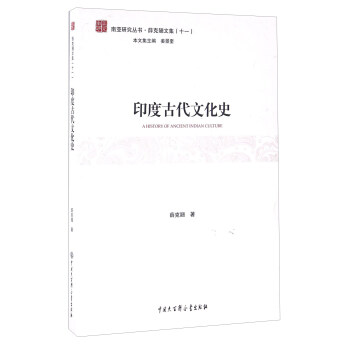
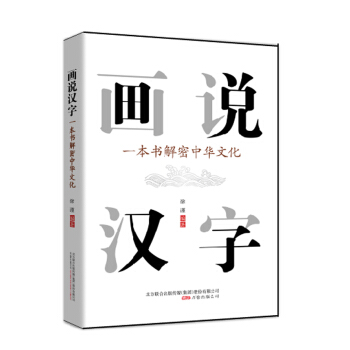
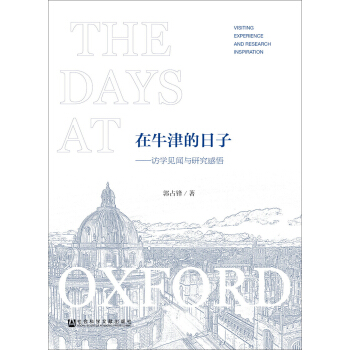
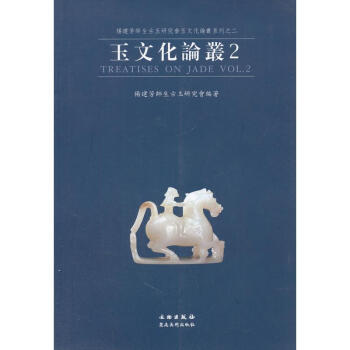
![二十五史弹词辑注 明 杨慎 著 国学[史诗]唱出来的历史故事 49.8 pdf epub mobi 电子书 下载](https://pic.tinynews.org/1636100985/55a59aa8N4349e925.jpg)
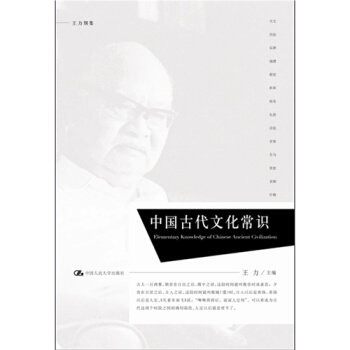

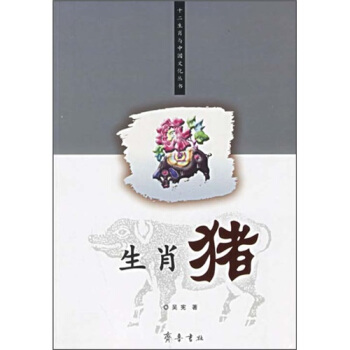


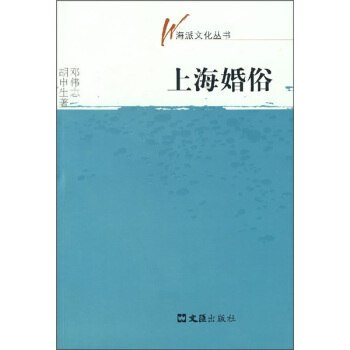
![中华风物:中国传统服饰(英文版) [Traditional Chinese Costumes] pdf epub mobi 电子书 下载](https://pic.tinynews.org/10747717/0927db24-7cdc-46f4-9ae9-078a181ebd60.jpg)
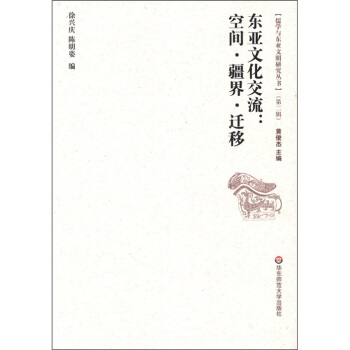
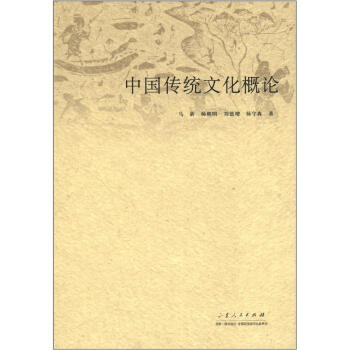
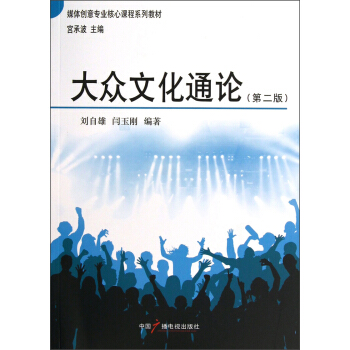
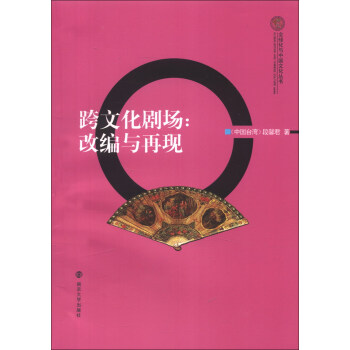
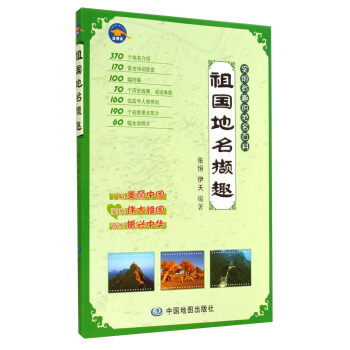
![中国红:泥塑(文化遗产篇) [Clay Sculpture] pdf epub mobi 电子书 下载](https://pic.tinynews.org/11626073/55189ff4N488e8af0.jpg)